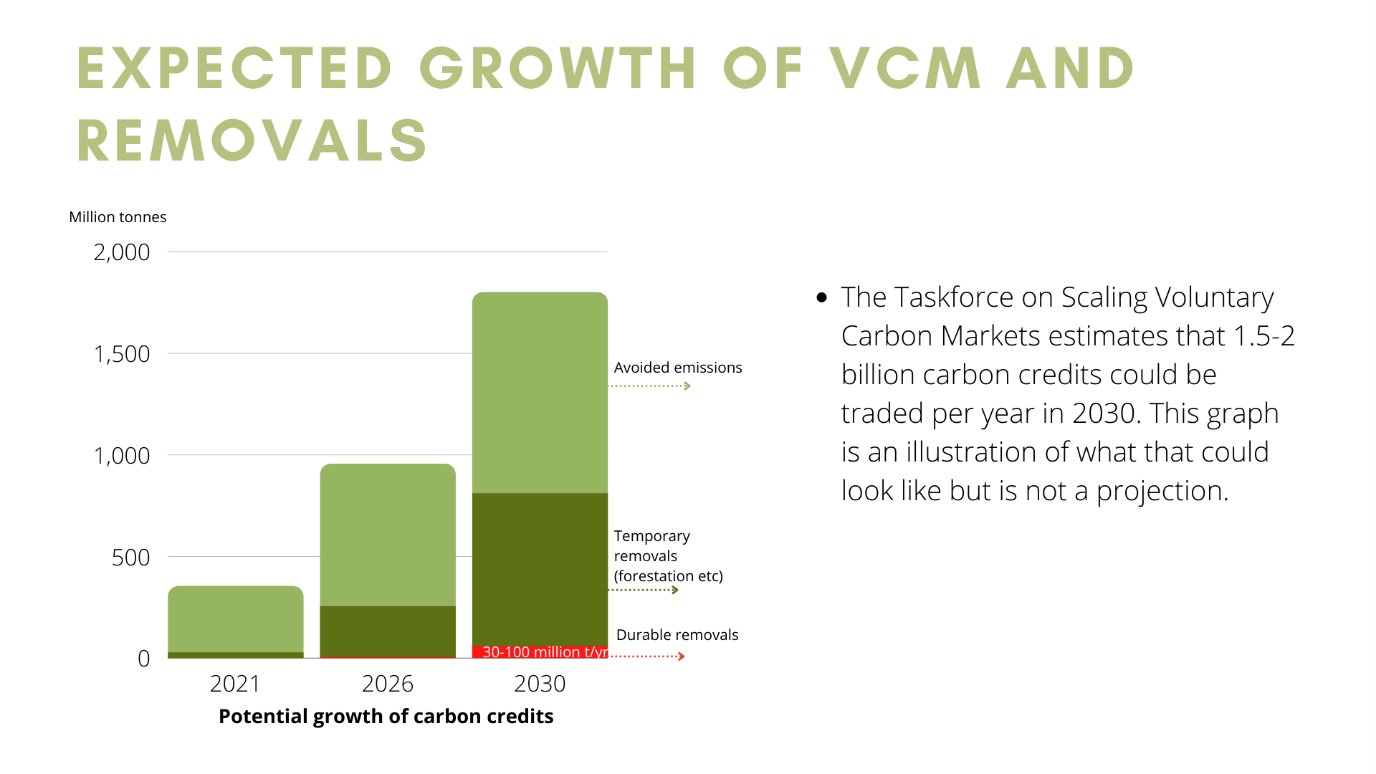
In everyday language, ‘buying carbon credits’ and ‘offsetting’ are used interchangeably. But they are not the same. To stop greenwashing while increasing funding for climate projects, there is an urgent need to separate the unit, a carbon credit, from the activity, making a climate claim.
A ‘carbon credit’ is a noun, describing a unit, often tradeable, that represents a quantified way of supporting emission reduction and carbon removal projects.
‘To offset’ is a verb, a claim a company or individual can choose to make after purchasing carbon credits to cancel out against their greenhouse gas emissions. This can reduce the urgency and desire of the purchaser to deal with that carbon. When an organization ‘offsets’, they do so in order to claim that they have compensated for some or all of their emissions, or as part of a larger strategy to claim to be “carbon neutral” or “net zero”. Using the noun ‘offsets’ to refer to carbon credits is not helpful, since it implies that the credits can only be bought for offsetting purposes.
When a company makes an offset or compensation claim for their emissions, the climate is supposed to be better off, with one fewer ton of CO2 in the atmosphere than there otherwise would be, thanks to the carbon credit purchase. However, if buyers rely on the carbon credit types most prevalent on the market today, upholding such a claim under scrutiny is near impossible. For renewable energy carbon credits, it has become very difficult to ensure that the project the credits ostensibly fund wouldn’t have been built anyway, or that new renewable energy leads directly to the retirement of fossil energy. For credits from protected forests, it is incredibly tricky to prove that they lead to less deforestation on a global basis, especially when taking indirect carbon leakage into account, or that the forest won’t be cut down in the future. For projects that grow trees, there are few ways to ensure the forest will retain its carbon over the very long-term.
Several companies have now begun to support climate solutions and purchase carbon credits without calling it compensation. Examples include Paypal which has purchased avoided emissions credits and Klarna and Stripe which have purchased expensive carbon removal from new suppliers using nascent methods, without making offsetting claims.
The focus for corporates supporting climate should be on creating as much long-term positive impact as possible and contributing to global net-zero rather than buying a set amount of tons to compensate for and offset its own emissions today. The latter often leads to a race to purchase credits as cheaply as possible rather than on the basis of the actual climate impact that those credits are generating. For cheap credits, the impact is often low or non-existent. Exclusively compensation-based strategies can lead to the exclusion of higher-cost, but potentially high-impact solutions, such as new methods for removing carbon directly from the air. Such techniques need support today to drop in costs, but they will not receive this support if the only commitments companies are willing to make are on the basis of compensating for internal emissions at the lowest cost.
The concept of offsetting also excludes support for impactful solutions that will deliver removals or emission reductions in the future. Examples include supporting advocacy projects (as recommended by Giving Green and Founders Pledge), grassroots organizations outside carbon markets, and R&D into new climate solutions, none of which can generate carbon credits.
Furthermore, to only ask for companies to offset the emissions attributed to them obscures the fact that some businesses can give much more support to climate solutions than others. Companies with high-profit margins and low emissions, such as those in the finance, consultancy, and IT sectors, should be expected to pay more to external climate projects to remove each ton of carbon they emit than, for example, manufacturing companies with lower profit margins and higher emissions.
Purchasing carbon credits can be one (although not the only) way of helping the world reach net-zero, but the concept of offsetting as it works today is not sufficient, let’s move beyond it.

Figure 1: Expected growth of voluntary carbon markets and removals (graphical addition by illuminem editorial team, graphic by one of the authors)
Energy Voices is a democratic space presenting the thoughts and opinions of leading Energy & Sustainability writers, their opinions do not necessarily represent those of illuminem.
Illuminem is the world's leading source of comprehensive, trending and high-quality information for energy, sustainability, policy, climate change... Illuminem was recently founded by a group of young professionals from institutions around the world. It is the fruit of the passion of a new generation, sharing a common responsibility towards our planet.